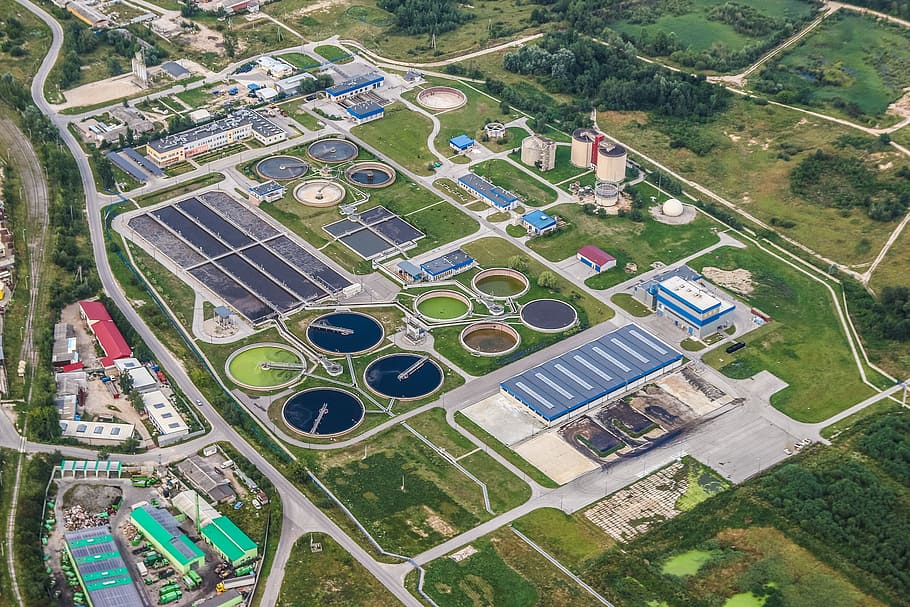Water treatment
Contents |
[edit] Introduction
Water is a chemical compound that is essential for all known forms of life. It is a transparent, tasteless, odourless and almost colourless substance that covers 71% of the Earth’s surface and is the main constituent of rivers, lakes, oceans and so on.
[edit] Treating water
In order to sustain human and other forms of life, safe drinking water is essential, with good sanitation being the single most important determinant of public health.
Sanitation has improved globally in recent decades, but it is estimated that more than 2.5 billion people still do not have access to adequate sanitation and 1 billion do not have access to safe water. Forecasts suggest that by 2025, over half the world’s population will be vulnerable in some way related to water supply or sanitation.
Typically, the first stage of the water supply process is the collection of untreated water (or raw water) from the natural environment in reservoirs, either from rivers or streams or from groundwater.
The collected water is then directed to a treatment facility, where it goes through a series of processes to remove unwanted substances (such as soil, sand, stones and vegetation) and harmful materials (such as chlorine and other contaminants) to produce water that meets specified requirements. The end result should be safe for use - whether for human consumption, washing, recreation, industrial applications, irrigation and so on - and free of undesirable, materials that could damage equipment during - or after - the water treatment process.
[edit] Steps of water treatment
After collection, the stages of water treatment include:
- Screening and straining. This is the basic removal of large elements such as organic and inorganic matter.
- Coagulation and flocculation. During coagulation, certain chemical agents (referred to as coagulants) are added to untreated water to make the particles in the raw water bind together (flocculation). After this process, the larger particles are more easily separated out for removal.
- Sedimentation. Large, insoluble particles created during coagulation and flocculation are permitted to settle to the bottom of large holding facilities where the treated water is kept. Cleaner water then separates out to be collected at the top. This process is sometimes called clarification.
- Filtration.In this stage, the water is distributed over filters to remove the smaller insoluble particles. With rapid gravity filters, water is passed through a tank of coarse sand which traps particles. With slow sand filters, water is slowly filtered through large beds of fine sand.
- Disinfection. The water’s purity is tested several times before a tiny amount (less than one milligram per litre) of chlorine is added to kill any organisms or bacteria which may remain.
- Storage and distribution. Once treatment is complete, the water is stored in covered reservoirs before being pumped out via a distribution network of pipes and pumping stations.
[edit] Water treatment vs water purification
Purification is a type of treatment, but the two terms are not synonymous. Water purification is a specific aspect of water treatment that removes toxic materials (such as contaminants and pathogens) from the water in order to make it fit for consumption. While it is often incorporated into the treatment process, purification is not always required. For instance, purification may not be required for industrial purposes.
Pressurisation of Closed Heating and Cooling Systems (BG82 2022), by Rob Clemson, published by BSRIA in October 2022, defines water treatment as: ‘Any processes that improve the quality of water to make it appropriate for its intended use and reduce the risk of damage to the system. Detail on the topic can be found in BSRIA Guide BG 50.’
[edit] Related articles on Designing Buildings
Featured articles and news
CIOB report; a blueprint for SDGs and the built environment
Pairing the Sustainable Development Goals with projects.
Latest Build UK Building Safety Regime explainer published
Key elements in one short, now updated document.
UKGBC launch the UK Climate Resilience Roadmap
First guidance of its kind on direct climate impacts for the built environment and how it can adapt.
CLC Health, Safety and Wellbeing Strategy 2025
Launched by the Minister for Industry to look at fatalities on site, improving mental health and other issues.
One of the most impressive Victorian architects. Book review.
Common Assessment Standard now with building safety
New CAS update now includes mandatory building safety questions.
RTPI leader to become new CIOB Chief Executive Officer
Dr Victoria Hills MRTPI, FICE to take over after Caroline Gumble’s departure.
Social and affordable housing, a long term plan for delivery
The “Delivering a Decade of Renewal for Social and Affordable Housing” strategy sets out future path.
A change to adoptive architecture
Effects of global weather warming on architectural detailing, material choice and human interaction.
The proposed publicly owned and backed subsidiary of Homes England, to facilitate new homes.
How big is the problem and what can we do to mitigate the effects?
Overheating guidance and tools for building designers
A number of cool guides to help with the heat.
The UK's Modern Industrial Strategy: A 10 year plan
Previous consultation criticism, current key elements and general support with some persisting reservations.
Building Safety Regulator reforms
New roles, new staff and a new fast track service pave the way for a single construction regulator.
Architectural Technologist CPDs and Communications
CIAT CPD… and how you can do it!
Cooling centres and cool spaces
Managing extreme heat in cities by directing the public to places for heat stress relief and water sources.
Winter gardens: A brief history and warm variations
Extending the season with glass in different forms and terms.
Restoring Great Yarmouth's Winter Gardens
Transforming one of the least sustainable constructions imaginable.
























